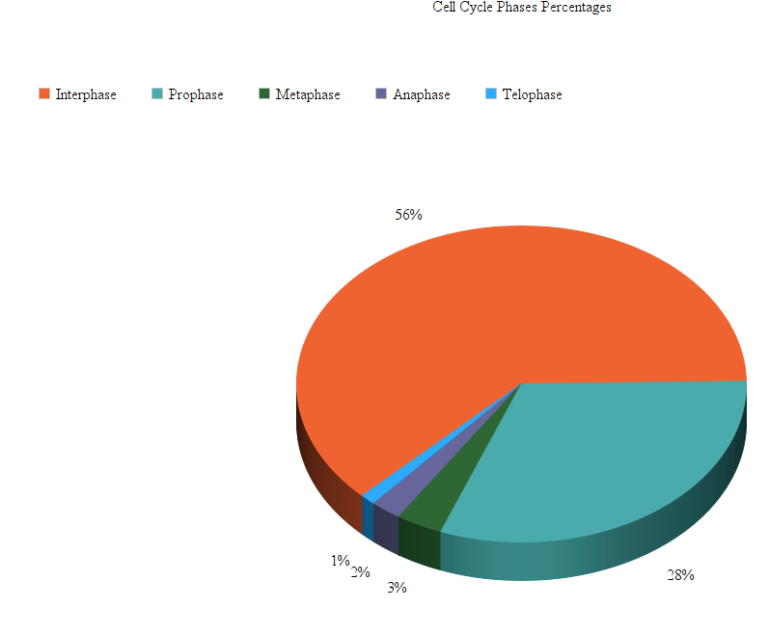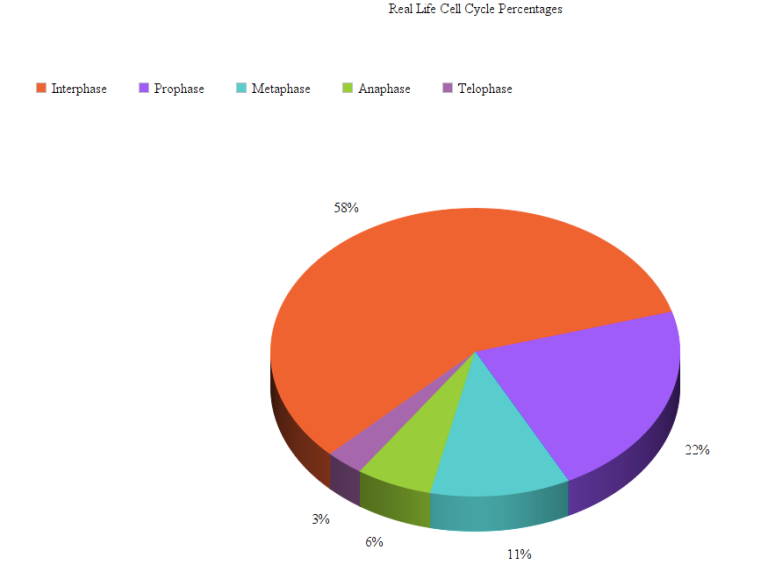
What do you think when you think of Bella and Edward? Bad acting Kristen Stewart? Sometimes. A sparkly vampire? Probably. But, here’s some Twilight trivia you probably never new. Bella and Edward fell in love over mitosis. Okay, not exactly. They were doing a biology project about mitosis when they first talked. And, when you think about it, mitosis is more interesting than most of the first Twilight movie.
So, what is mitosis? Mitosis is the “reproduction part” of the cell cycle. One parent cell divides and produces 2 daughter cells, or 2 cells with all the functions and chromosomes as the parent cell. There are 4 different phases of mitosis (not including interphase which is the inactive stage of the cell cycle).
Prophase- This is the first stage. Here, the chromosomes begin to create themselves and divide. They become two separate but identical strands of attached DNA. Also, the two centrosomes go to opposite ends of the nucleus.

Metaphase- Next is metaphase. The chromosomes spread out and attach themselves to microtubials that come from the centrosomes. As Hank Greene says in his crash course video, it is the longest phase of mitosis and can take up to 20 minutes. Here, the chromosomes come to the middle.

Anaphase- Finally, the chromosomes start to pull apart and become two separated, identical chromosomes. They are pulled towards different sides of the cell.

Telophase- Lastly, the chromosomes and centrosomes begin to recreate the two new cells and they split into the two new daughter cells.

Interphase- In the last blog post, we talked a little more about interphase. You can view that post right here. You can tell a cell is interphase because a single nucleus will be clearly visible because no dividing or mitosis is going on.
Now, how did I study this process mitosis? We did this two different ways. Virtually and physically. To become more familiar with identifying the phases of mitosis, we did an online lab to practice picking out the stages. In this lab, we were to count how many of each cell were interphase, prophase, metaphase, anaphase, and telophase of the 36 given cells. All of these cells came from a computer made onion root tip. From there, we had to make a data table and pie chart representing the time and percentage each phase takes up in the cell cycle. Based on previous research, it could be guessed that interphase was going to be most common.
These are the results in numerical and percentage form:


In real life, how much time would each part of this cycle take up. As told by our teacher, Mr. Ludwig, the cell cycle takes on average 20 hours to complete. How much time does each individual phase take. Using the power of MATH we are able to figure that out based on the 36 cells.
- Interphase- 11.2 hours
- Prophase- 5.6 hours
- Metaphase- 36 minutes
- Anaphase- 24 minutes
- Telophase- 12 minutes
Next, we did the real life portion of this lab. Using a microscope, we used a microscope to look at actual onion root cells and actually identify what phase the real life cells were in. This time, my group sampled 100 cells.

The results showed as follows:


As you can see, the results here are very similar to the online results. It makes you wonder if the times are also the similar.
- Interphase- 11.6 hours
- Prophase- 4.4 hours
- Metaphase- 2.2 hours
- Anaphase- 1.2 hours
- Telophase- 36 minutes
As you can see, all the times besides interphase are slightly different. This is most likely due to the difference in amounts of cells studied. A lot of the results could be varied or not exact because there was no way that we could view all the cells of a onion root. That would be like billions of cells.
I hope now that you are able to understand the phases and how often the phases of mitosis/the cell cycle take place. Other than interphase, prophase seems to be the longest phase. This might be because the chromosomes are forming from stringy organelles. I wish that we could view all the onion root cells to make things more accurate, but we cannot. So, for now, I will leave you with these results and the entire clip from Twilight where they are studying mitosis.